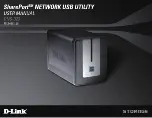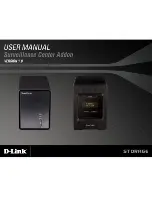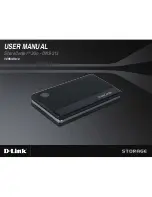
10
3.7.4.2. Add air as required and stabilize the air pressure in the
total tank system to 5 psig.
3.7.5. EXTERNAL SOAP TEST
3.7.5.1. Soap the entire exterior of the tank, checking for leaks.
(Follow instructions in Points 3.1.6. through 3.1.8.,
including
Warnings following 3.1.8.) Watch for active air bubbles, which
indicate a leak. Pay special attention to fittings and manways.
3.7.5.2. Monitor the pressure for one hour.
3.7.5.3. When the test is completed, carefully release the air
pressure from the tank by opening the air-supply valve.
3.7.5.4. When the airflow stops, remove the test manifold.
3.7.5.5. Replace the protective covers in the service fittings.
3.8. TESTING A DOUBLE-WALL MULTICOMPARTMENT
TANK WITH A WET INTERSTITIAL SPACE
Never pressurize a wet interstitial space. Doing so may
damage the primary tank or cause tank failure.
3.8.1. GENERAL
3.8.1.1.
See FIGURE 3-10 and FIGURE 3-11
.
3.8.2. BASE TANK’S PRIMARY (INTERNAL) TANK
3.8.2.1. Keep the tank vertical (the reservoir on top) at all times
or the monitoring fluid may drain from the reservoir.
3.8.2.2. Remove all temporary service-fitting plugs and the
reservoir-fitting plug.
3.8.2.3. Check the monitoring-fluid level in the reservoir. It
should be about 1/4 full.
3.8.2.4. Visually check the interior of each compartment for
monitoring fluid.
There should not be any.
3.8.2.5. Redope fittings and install plugs in all openings, except
one service fitting in each compartment (needed for the test
manifolds) and the reservoir fitting.
Follow instructions in Point
3.1.5. (See FIGURE 3-6 and FIGURE 3-7.)
3.8.2.6. Before doing the air test of the base tank
(described in
SECTION 3.8.3.)
and the air test of the end tank(s)
(described in
SECTION 3.8.4.)
, install a test manifold in the open service
fitting on both the base and end tank(s).
3.8.3. AIR TEST OF BASE TANK’S PRIMARY TANK
3.8.3.1. Connect the pressure source to the test manifold on the
base tank.
(See FIGURE 3-3 and FIGURE 3-11.)
3.8.3.2. Pressurize the primary tank of the base tank to 5 psig.
Allow the pressure to stabilize by adding or removing air as
necessary.
3.8.3.3. Close the air-supply valve on the test manifold on the
base tank. Disconnect the air-supply line.
3.8.3.4. Soap all service fittings and manways. Watch for active
air bubbles, which indicate a leak. Look through the laminate for
any active air bubbles rising to the top.Their presence would
indicate an internal leak. Also, check the reservoir for bubbles in
the monitoring fluid.
(The monitoring-fluid level will rise
during the air test.)
3.8.3.5. Monitor the pressure for one hour.
Do not release air
pressure.
3.8.4. AIR TEST OF END TANK(S)’ PRIMARY TANK(S)
3.8.4.1. Connect the pressure source to the test manifolds on
the end tank(s).
(See FIGURE 3-3 and FIGURE 3-12.)
3.8.4.2. Pressurize the primary tank of the end tank(s) to 5 psig.
Allow the pressure to stabilize by adding or removing air as
necessary.
Note: The monitoring-fluid level will rise during the air test.
3.8.4.3. Close the air-supply valve on the test manifolds on the
end tanks. Disconnect the air-supply line.
3.8.4.4. Soap all service fittings and manways. Watch for active
air bubbles, which indicate a leak. Check the reservoir for
bubbles in the monitor fluid.
(The level of the monitor fluid will
naturally rise due to the pressure in the primary tank.)
3.8.4.5. Monitor the pressure for one hour.
3.8.4.6. When the test is complete, carefully release the air
pressure from all compartments by opening the air-supply valve.
3.8.4.7. When the air flow stops, remove the test manifolds.
3.8.4.8. Check the monitoring-fluid level in the reservoir. It
should be at approximately the same level as the pretest level.
3.8.5. SECONDARY TANK (EXTERNAL)
Do not connect air supply directly to the interstitial-space
monitor fitting. Pressurizing the secondary tank (interstitial
space) by itself may damage the primary tank or cause tank
failure.
3.8.5.1. Check the exterior of the tank for monitoring fluid.
(The monitoring fluid is dyed blue to distinguish between
moisture and monitoring fluid.) If monitoring fluid is found, wipe
the tank dry and verify that the monitoring fluid does not
reappear. Lift the tank to check the bottom.
Do not roll the tank.
3.8.5.2. Visually check the interior of the tank for monitoring
fluid.
There should not be any.
3.8.5.3. Replace the protective covers in the service fittings and
the reservoir fitting.
4. BACKFILL MATERIAL
4.1. GENERAL
4.1.1. Xerxes tanks must be installed using either pea gravel or
crushed stone as backfill material.












































